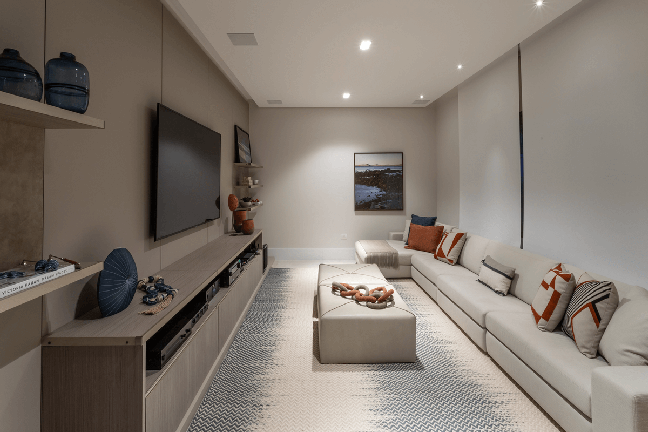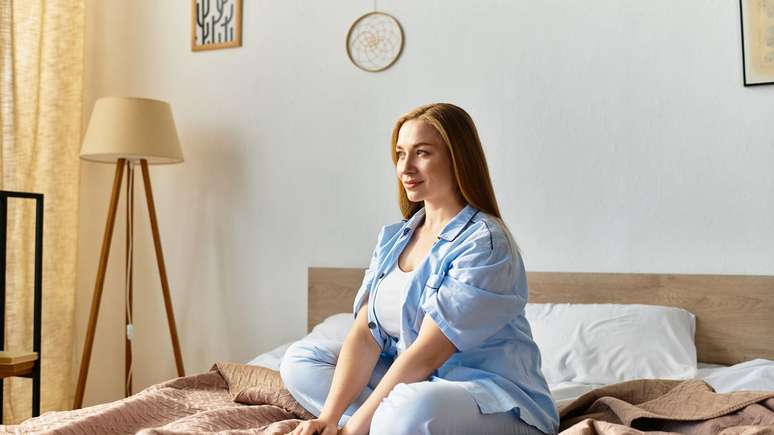The architect explains how to use the piece to compose more welcoming spaces
Timeless and extremely suitable in the most diverse furnishing proposals: the chaise longue, which in French means ‘long chair’, is an invitation to relax and an opportunity to look and focus on the well-being of the present moment.

Also known as ‘lover’ or ‘chair’, its story goes back long before it burst into the decoration of France and then across the European continent in the 16th century: when they evoked the rest, gods and goddesses of ancient Egyptian mythology, then passing through the Greek civilization, he already enjoyed the design of the piece.
Ideal model for rest
Marked by the aesthetics of an elongated lounge chair, combined with a backrest on one side and an armrest that offers comfort to the user, the chaise longue has features that lead it to compose social areas such as the living room and balcony, as well as more confidential. , like a dormitory.
“Its presence has a very clear intention: to offer relaxation opportunities to residents”, explains architect Patricia Penna, who heads the Patricia Penna Arquitetura & Design studio.
How to use it in environments
According to the architect, the chair can be inserted in different ways. “It can replace an armchair or even a couple of them, just as we can present a single object in a corner of the balcony, suggesting a space for reading or resting”, he indicates. In integrated environments, the furniture can enter the demarcation between the rooms.
As for the models, the decision can be made both by the design and the function of the environment. “With the evolution of interior architecture, in a home theater, the sofa can add a fixed or retractable chaise”, emphasizes Patricia.
Subsequently, the professional guides how to apply, with a precise appearance, the furniture in interior design and shares suggestions on materials and styles. Watch!
1. Analyze the characteristics of the environment
Before choosing a model, including the design and colors, it is crucial analyze the characteristics of the decoration so that the furniture is not responsible for visual noise. For the architect, it is not essential that the chaise follows a color palette similar to the other components of the room, but with regards to harmony, it is essential that it dialogue within the issues of colors, textures and shapes.

2. Consider the function of the part
For architect Patricia Penna, the use of the chaise longue is varied and can be placed in different contexts. In a social area, for example, in addition to serving as an extra resting place, it contributes to welcoming guests by increasing the number of seats.
In addition to single pieces, for these cases, a good option is to focus on modular versions that allow them to be positioned freely or fixed to the sofa. In dorms, placing the chaise longue in an empty corner is an ode to leisure. “In living rooms with fireplaces, I really like the prospect of adding a chaise longue to enjoy cold days in a very pleasant way,” he points out.
3. Choose the right style
The styles vary depending on the area where the chaise longue will be placed. In outdoors, natural or synthetic fiber models are excellent options. But it is imperative to analyze whether the structure and finishes of the furniture are suitable for outdoor use, so that they can withstand the elements of an open space, such as contact with humidity and sunlight.
In the interiors, the furniture opens up to surprisingly designed pieces, both for more classic and more contemporary environments. Whether it’s all in capitonê, with linen upholstery, or even with a metallic structure with an evocative design, the chaise can be the highlight of an environment or simply make a presence with a more discreet air.
by Luca Janini
+The best content in your email for free. Choose your favorite Earth Newsletter. Click here!
Source: Terra
Benjamin Smith is a fashion journalist and author at Gossipify, known for his coverage of the latest fashion trends and industry insights. He writes about clothing, shoes, accessories, and runway shows, providing in-depth analysis and unique perspectives. He’s respected for his ability to spot emerging designers and trends, and for providing practical fashion advice to readers.







